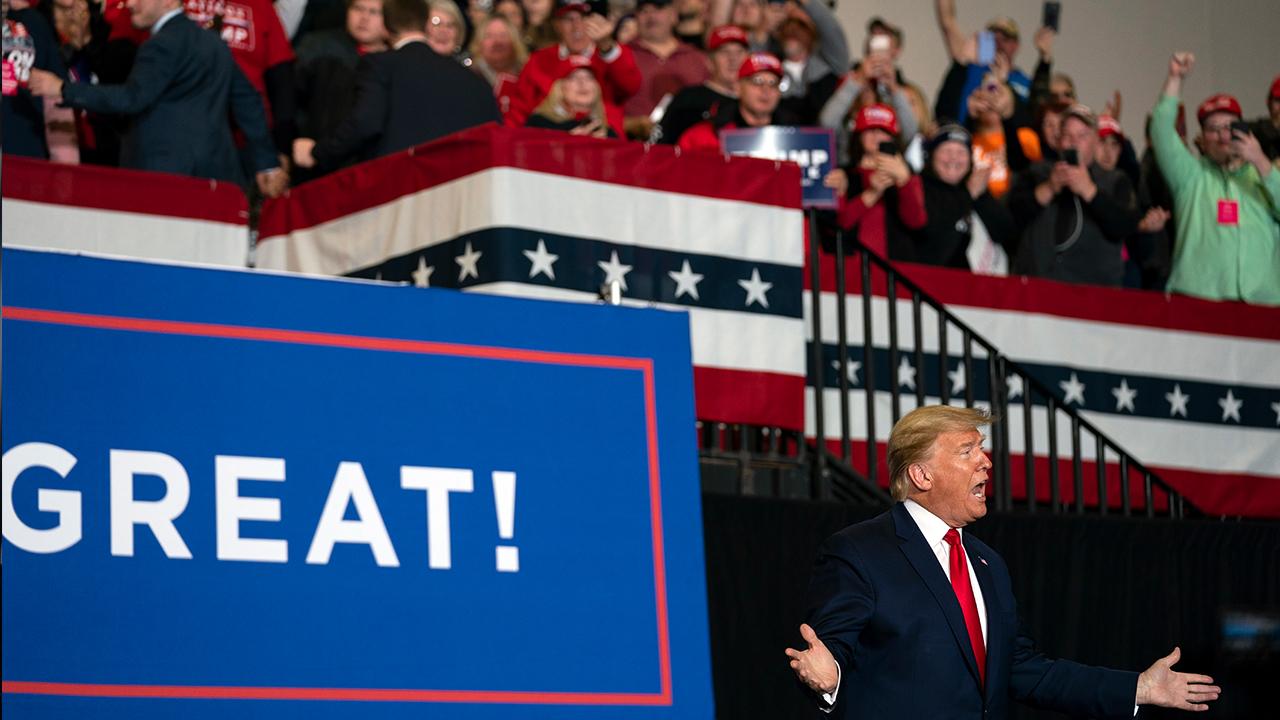Health care needs disruption – Trump's price transparency plan could start it: Arthur Laffer, Larry Van Horn
Once health care begins to function like every other industry all Americans will feel the positive effects
At his State of the Union address Tuesday night, President Trump highlighted how his administration’s recent health care price transparency rules will reduce medical costs that are plaguing ordinary Americans. Health care costs have doubled, adjusted for inflation, since the beginning of the century to make up 18 percent of GDP.
The rules, issued last November, require providers to publish their cash and insurance-negotiated prices for a set of shoppable services before patients get treatment.
This price transparency will allow patients to easily shop for lower cost care and ensure that patients – as Trump stated Tuesday night – will "never be blindsided by medical bills."
Employers, which provide health coverage for 181 million Americans, can shop for health care coverage like they do for every other business expense. As President Trump said, "It will save families massive amounts of money for substantially better care."
Access to cash prices would lower the cost of health care. Our research, recently published in Health Management Policy and Innovation, finds that cash prices for health treatments are 39 percent less expensive on average than prices paid by insurers. For instance, the average price that insurance pays for a prostatectomy in Washington, D.C. is $33,285, with a range from $18,151 to $60,853. Yet a pure cash price exists for $13,968.
Considerable anecdotal evidence, including a 2016 Wall Street Journal feature asking patients to submit their medical bills, further supports this cash advantage. A knee X-ray for a patient at Boulder Community Hospital in Colorado was $600 with insurance and just $70 with cash. An ultrasound examination for another patient carried a $260 insurance copay versus $186 in cash.
US HEALTH CARE SYSTEM CAUSING 'MORAL INJURY' AMONG DOCTORS, NURSES
Peer-reviewed research found that after California Public Employees Retirement System enrollees were given shoppable prices for hip and knee replacements in 2011, patients chose low-cost facilities 21 percent more frequently and high-cost facilities 34 percent less often. Prices at high-cost facilities subsequently declined by 18 percent.
The increasing prevalence of high-deductible plans, which now cover nearly one-third of privately insured patients, provides an added incentive to price shop. Our research suggests that patients are far more sensitive to different prices for health care services than previously thought.
The airline industry provides a historical corollary of the potential of clear prices. After airlines were deregulated and airfare became transparent in 1978, an air travel price war ensued. Carriers began to compete on price and quality. Efficient carriers such as Southwest flourished, while inefficient ones such as Pan Am faltered. Average airfare fell by 50 percent, adjusted for inflation, while safety and access improved dramatically.
A similar disruption is needed in health care. Without transparent prices, patients and employers shop blind with the equivalent of a blank check. They don't know how much they'll owe until they get their bill weeks later, when the services are non-refundable and non-negotiable.
Opaque prices are a leading driver behind high health care costs. Without price competition, providers have no incentive to reduce cost, waste, administrative bloat, and other inefficiencies. In a functioning system with transparent prices, the market would punish such waste and price variation.
GET FOX BUSINESS ON THE GO BY CLICKING HERE
Pricing apps and comparison technology will allow patients to avoid inefficient, overpriced, fragmented, and surprise billing providers. Employers will be able to steer employees to less expensive providers and pass the savings on to them in the form of lower premiums, no deductibles or copays, and higher wages, stimulating the overall economy.
As providers are forced to lower their prices to keep their customers, price discrepancies for the same services will narrow, and the market will put downward pressure on prices.
Quality will also improve because transparent providers, which bundle and guarantee their prices, have more incentive to excel than their traditional counterparts who are rewarded for inefficient and superfluous care. In a transparent market, providers will compete on quality.
Some employers and patients are already significantly cutting their health care costs by contracting with the small number of price transparent providers that already exist. Roughly 300 employers have health care contracts with the Surgery Center of Oklahoma, for instance, which offers bundled procedures for guaranteed prices that are significantly lower than national averages.
Once health care begins to function like every other industry, with up-front prices, choice, competition and, as a result, lower costs and better quality, all Americans will feel the positive effects. Employers can use their health care savings to create jobs and increase wages. The middle class can protect themselves from medical bankruptcies. And health care’s anchor on the broader economy will lift.
Price transparency is a necessary precursor to moving the U.S. health care system towards one that serves the best interests of Americans both medically and financially.
Arthur Laffer was a member of President Reagan’s Economic Policy Advisory Board for both of his two terms and is the founder and chairman of Laffer Associates.
Larry Van Horn is an expert in health care economics and serves as the executive director of health affairs at Vanderbilt. He also sits on the HHS Quality Summit Panel.




















